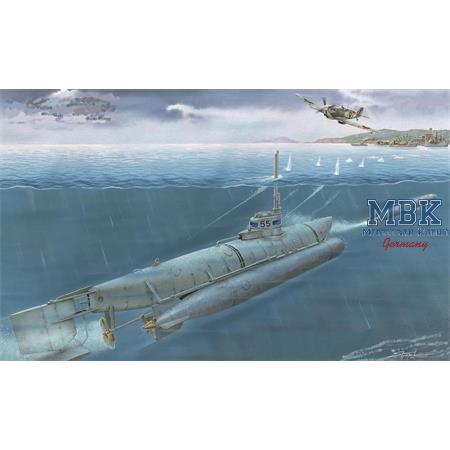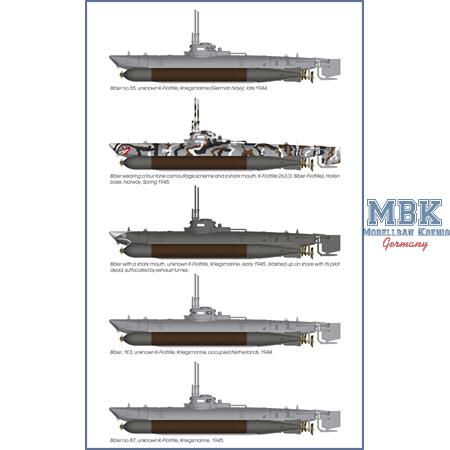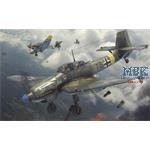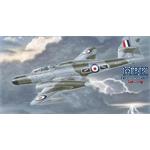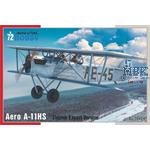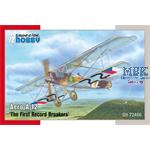Biber German Midget Submarine 1/72
SN72006
Special Hobby
1:72
In 1943, it became clear that the Allied invasion would soon take place somewhere on the Atlantic coast of the continent, and the German military began to search for and develop new and rather unorthodox weapons to avert the invasion. In addition to the manned torpedoes "Neger", "Marder" and "Hai", the midget submarines "Biber" and "Molch" were also to stop the invasion fleet.
The original idea for the Biber submarine came from Korvettenkapitän Robert Bartels, first prototypes were built and production took place at the Flanderwerke in Lübeck, development was led by Hermann Bunte.
Bartels was allegedly influenced by captured British midget submarines of the type Welman W46.
The Biber had a displacement of 6.6 tonnes and was powered on the surface by a 32 hp Opel Blitz petrol engine, while propulsion underwater was provided by a Siemens SSW GL231 electric motor.
The Beaver could dive to a depth of 20 m, and up to 30 m in an emergency.
It could carry either two G7e torpedoes or mines.
The hull was so tiny that its operator did not have much room in the conning tower.
The prototype Biber, also called Adam, was tested on 29 March 1944, though the tests were not entirely successful and several improvements had to be made before German Admiral Karl Dönitz authorised the construction of four more prototype Bibers and later large-scale production, which resulted in a total of 324 Bibers from the Flanderwerke, Ansaldo and Klökner-Humbolt-Deutz factories.
Biber were used in so-called K flotillas, numbered 1 to 9, which were deployed during the Allied invasion in the English Channel, in the North Sea off Norway, in the Scheldt estuary and also in the Waal during the attack on the Nijmegen bridge.
The Biber were not very successful as torpedo carriers; mine-laying missions were more successful.
There were also problems with exhaust fumes getting into the cab, and many Beavers were lost for this reason.
The conning tower was not high enough, so the submariner, equipped only with a compass on his wrist, had difficulty finding his way to the target.
Moreover, although the Biber was quite manoeuvrable and stable on the surface, it was very clumsy underwater.
Several Biber submarines were captured during the war, but the Allies seemed to have no interest in them and tested them only very briefly.
Some of the surviving machines were exhibited in museums.
Plastic model kit
Scale 1:72
unbuilt / unpainted
.
Schreiben Sie jetzt Ihre persönliche Erfahrung mit diesem Artikel und helfen Sie anderen bei deren Kaufentscheidung
